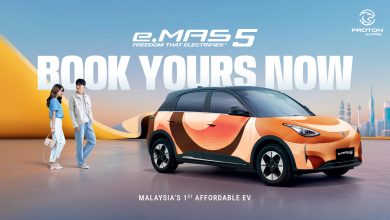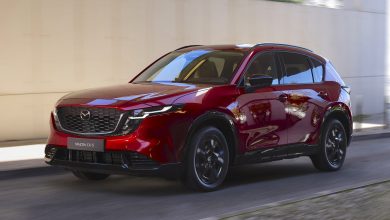Nissan Trials New Heat-Reflecting Paint That Keep Its Cars Cool

Early results show a significant drop in both surface and cabin temperatures for cars with this paint.
Even with the darkest of tints and sunshades all around, getting into one’s car after it has been left to bake under the hot Malaysian sun is never something anyone actually does with any delight. And unfortunately, the struggle of getting the already overworked air-con to rapidly cool the cabin down is only going to get worse from here on out too, as the global mercury bulb steadily floats ever upwards.
Then again though, this aforementioned continued struggle might only apply to non-Nissans in the future. Such is as the Japanese automaker has recently developed an innovative heat-reflecting automotive paint formula, for which early trials of it shows to be capable of dropping interior temperatures by a decent 5ºC!

Parked side-by-side on the open tarmac under the sun at Tokyo’s Haneda Airport, Nissan has touted that a vehicle treated in its newly-developed cool paint has shown yields of up to a 12ºC reduction in exterior surface temperatures and up to 5ºC cooler interior, compared to a vehicle featuring traditional automotive paint. The Japanese automaker further adds that the paint’s cooling performance is particularly noticeable when a vehicle is parked in the sun for an extended period.
Developed in partnership with Radi-Cool, a specialist in radiative cooling products, this new heat-reflecting paint of Nissan’s incorporates metamaterial, synthetic composite materials with structures that exhibit properties not usually found in nature.
The metamaterial embedded within features two microstructure particles that react to light. One particle reflects near-infrared rays in the sunlight that would typically cause molecular level vibrations within the resin of traditional paint to produce heat. The second particle meanwhile has the (remarkably novel) capability of creating electromagnetic waves that counteract the sun’s rays and redirects the energy away from the vehicle into the atmosphere. Combined, the particles in Nissan’s cool paint reduce the transfer of heat into surfaces such as the roof, hood, doors and panels.


Now it is worth highlighting here that radiant cooling paint isn’t exactly a new idea, with it having been applied to certain buildings and structures for some time already. These sorts of paint however is often very thick and are applied typically by a roller. Devoid of any clear topcoat too, it can leave a chalky residue when touched. What Nissan is pioneering here therefore with this automotive paint is a formula that could be incorporated into a clear topcoat, be applied via a spray gun and meet its rigorous internal standards for paint quality.

This cool paint project is touted to be part of Nissan’s continued pursuit of differentiated innovations that empower journeys and to help create a cleaner more sustainable society. A cooler cabin is not only more pleasant to enter, but also requires less air-conditioning run-time to cool the cabin to a comfortable temperature. This helps reduce load to the engine, or in the case of an EV, draw on the battery. In both powertrains, an improvement in efficiency is expected, as well as occupant comfort.
Nissan’s quest to create this cooler paint initially commenced in 2021, with over 100 samples since being developed and evaluated. In November 2023, a 12-month feasibility trial was commenced at Tokyo’s Haneda Airport where this cool paint has been applied to service kei vehicles operated by All Nippon Airways (ANA) airport services.

There are however still some challenges to overcome before this paint can be used commercially, with the biggest hurdle being that the cool paint is still six times thicker than regular automotive paint. The team behind the new tech is nevertheless confident in future applications, and envisions that it could soon be offered for special orders in a variety of colours.





